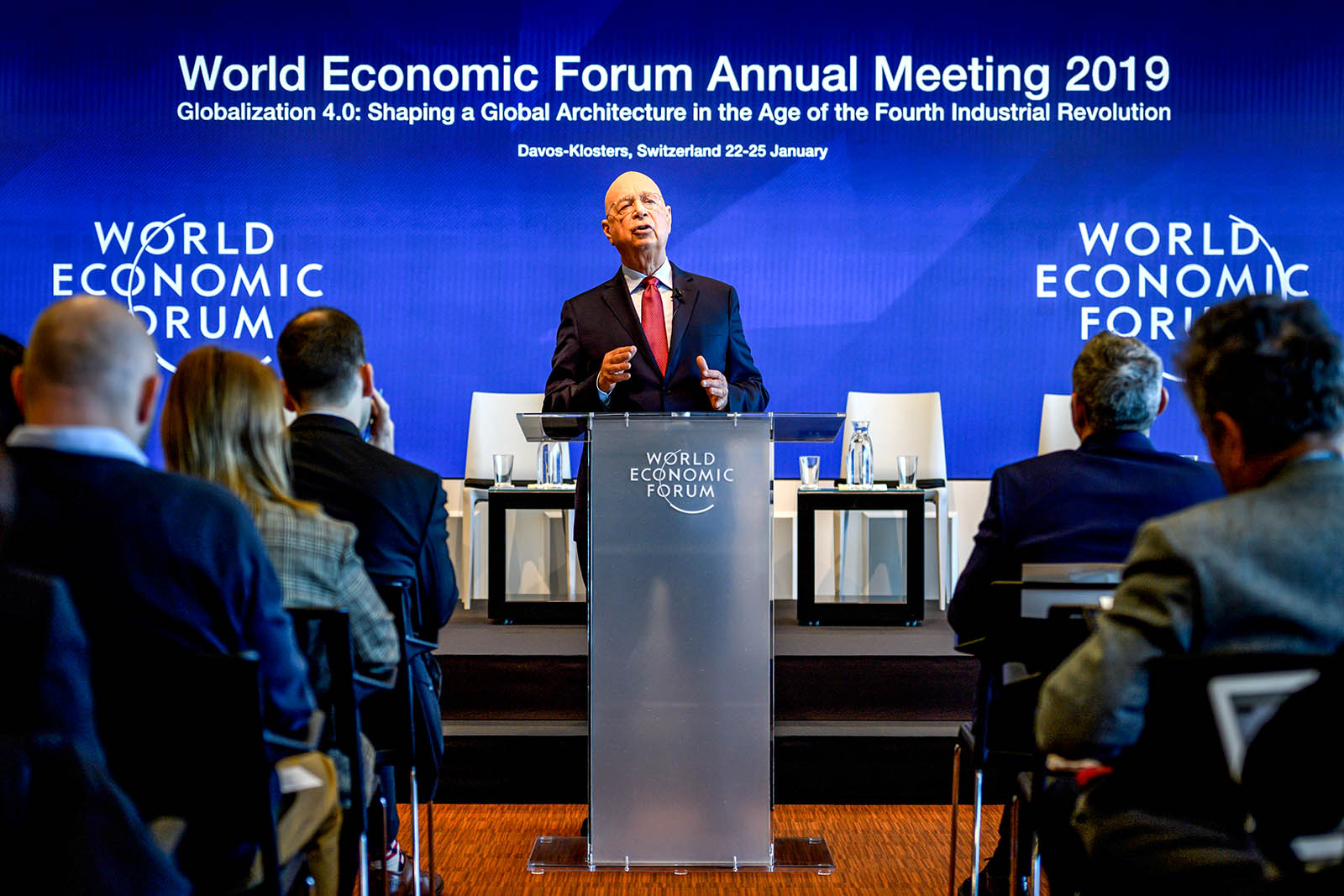Davos 2019: A Workforce Transformed—Not Displaced

Founder and executive chairman of the World Economic Forum Klaus Schwab attends a press conference ahead of the 2019 edition of the annual meeting of the WEF in Geneva. At this year's forum, corporate leaders will grapple with the promise and problems of automation and advanced data.
Photo: Fabrice Coffrini/AFP/Getty Images
Business and government leaders gather next week in Davos-Klosters, Switzerland, for the World Economic Forum’s Annual Meeting, and each year the stakes—for the future of work, global growth and well-being—get higher. How do we master a world of automation and artificial intelligence? Of longer life spans and multigenerational workforces? How do we deliver on the reskilling demanded by tomorrow’s jobs?
WEF 2019 will focus on a vision of tomorrow’s industry, referred to as Industry 4.0, reflecting the tech-driven momentum of a Fourth Industrial Revolution, powered by generational changes in skill and requiring a new vision of employment.
It’s a challenging future. But it’s not a dark one by any means. For the corporate sector, leadership will need to balance the promise of automation and advanced data with the financial health of the workforce—a special focus of Mercer, which will host a group of corporate and government global leaders for discussion on January 23 in Davos.
Workforce Transformation
Industry 4.0, at its core, is an issue of workforce transformation—not workforce displacement.
It’s defined by the intersection of longer lifetimes, new technology, evolving employment models, and financial dynamics. Governments and the private sector must proactively manage these dynamics, with an emphasis on financial health, workforce well-being and new opportunities for workers of all demographic segments and skill levels.
The focus should be on scenarios that create workforces, not destroy, them. For example, automation must be delivered as an optimizer, with robotics, artificial intelligence, machine learning, and conversational and service automation serving two purposes: to expand the enterprise and to serve both customers and the workforce by expanding individual capability and access to services.
If anything, cooperation replaces automation as a priority for Industry 4.0.
Give Employees a Voice
Neither drowned by technology nor lacking in opportunity, the workforce should have a voice, as organizations engage the workforce, not alienate it. Some best practices are already coming from the technology companies that produce some of today’s most disruptive tech.
Cisco, for example, recently engaged its workforce in a 24-hour “breakathon” intended to break down and rebuild its HR program. More than 800 employees took part in the event, with offices around the globe participating in a follow-the-sun manner.
Research tells us that investment in workforce reskilling and human capital development is a “no-regret action.” It is a beneficial investment no matter what.
Employees were split into small teams to identify problems they had experienced while doing their job and to pitch ideas for solutions. The result: several solutions across talent acquisition, onboarding, development, and leadership. One idea resulted in the creation of a mobile app that guides new employees and their managers during their initial weeks of work.
Importantly, Industry 4.0 is not limited to the G-20. Emerging markets are becoming a lens through which the future of work can be viewed. In Indonesia, digital technology and shared mobility have led to the rise of the biggest company in the country’s history, Go-Jek.
In Kenya, 48 percent of the country’s GDP is processed via mobile phones, creating an industry around mobile payments company M-Pesa. In India, Bosch Industry Consulting is among the international companies building digital cultures and creating digital immersion programs to facilitate understanding about digital transformation.
Is Longevity an Opportunity?
According to WEF research, the proportion of people over 65 years old around the globe is currently 10 percent; it is expected to jump to 22 percent by 2050. People are living and working longer. As a result, companies and governments have higher expenses for pensions and health benefits. This is complicated by rising health care costs and further complicated by the potential job displacement from AI, robotics and advanced data analytics—but there is opportunity as well as risk.
The longevity scenario varies across the globe, from China (25 percent of China’s population will be 60 or older by 2030) to the EU (65 and over rising from 19 percent to 29 percent of the population by 2070). Appropriate strategies include reskilling and team restructuring—a distributed workforce model that allows older workers to have more flexible assignments and schedules, as well as mentor younger talent.
Portable Savings
It’s all a matter of innovative thinking and retirement models that work for companies, governments and the workforce. For an employee population that will be changing jobs more frequently in the future, portable savings solutions are important. In addition, solutions should be explored to help smooth incomes during out-of-work periods due to the increase in portfolio careers of multiple part-time jobs and contract work, resulting in inconsistent income patterns.
Younger workers are increasingly likely to take more time off than in the past to care for aging parents as well as taking more time off to reskill, as careers are likely to be more fluid, changing more rapidly as technological advances continue. The issues are complex, calling for solutions that allow us to live and enjoy the present while preparing for the future.
Different but Not Devalued
But the opportunity is real. Reskilling the current workforce to prepare for Industry 4.0 has attracted governments, nongovernment agencies, trade groups and companies that are transitioning to automated and digital platforms. Predicting the exact nature of the demand for skills is impossible, but research tells us that investment in workforce reskilling and human capital development is a “no-regret action”—that is, it will be a beneficial investment even in the absence of skills shortages.
Looking at the possibilities of Industry 4.0 through the lens of complex games is one way to conceive of an optimistic future. When IBM’s Watson AI program beat world chess champion Garry Kasparov, the world was shocked. By now, the AI chess algorithms have outpaced the human brain to the point that AI platforms play each other in the Computer Chess Championship, while humans play only each other.
This could be analogous to the future of work. Automation will find its own level of expertise. That level might exceed human ability in many cases, but human ability need not be devalued in Industry 4.0.






